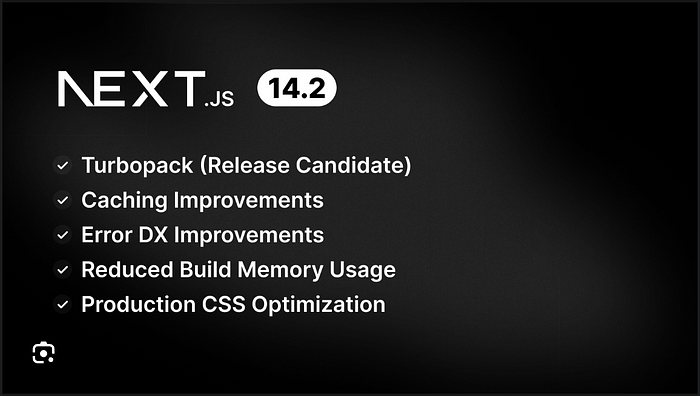Exciting Updates and Features in Next.js 14.2
Written on
Chapter 1: Overview of Next.js 14.2
Next.js continues to advance, enhancing the web development experience while boosting performance and reliability. The latest version, Next.js 14.2, brings a variety of exciting features designed to refine developer workflows and increase application efficiency. Let's explore the key improvements introduced in this release.

Turbopack: A Game Changer for Development
One of the standout features in Next.js 14.2 is Turbopack, which replaces Webpack as the primary bundling tool. This transition marks a significant leap for the Next.js ecosystem, designed to enhance the build process by providing near-instant updates when code changes occur. This improvement greatly boosts developer productivity through smarter caching and selective rebuilds, ensuring that modifications in one area do not unnecessarily trigger complete rebuilds in others. Importantly, Turbopack maintains compatibility with existing npm packages, minimizing disruption during the transition. Extensive testing across various Next.js use cases highlights its robustness and reliability.
With Turbopack, developers can expect a marked reduction in time spent waiting for updates, allowing for a greater focus on development rather than processing delays. This advancement not only accelerates the development cycle but also enhances the overall enjoyment of the development process.
Section 1.1: Build and Production Optimizations
Next.js 14.2 brings crucial enhancements to how applications are constructed and served. With new tree-shaking capabilities, the framework efficiently removes unused exports, leading to smaller bundle sizes and quicker load times. For instance, when importing a single component, it is no longer necessary to load all other components from that package. This is particularly evident with libraries like react-aria-components, which experienced a significant reduction in bundle size. Furthermore, memory usage during builds has been optimized to prevent crashes in larger applications—a vital improvement for enterprise-level projects. A new approach to CSS chunking has also been introduced, ensuring consistent style application across various pages without delays or flashes of unstyled content.
The first video, "What's New in Next.js 14.2," provides an overview of the latest features and enhancements.
Enhanced Caching Strategies
The caching mechanisms have undergone a major upgrade with the introduction of staleTimes configuration for the Client-side Router Cache. This new feature allows developers to define how long a cached page version remains valid before being deemed stale, granting more control over content freshness and performance.
Section 1.2: Improvements in Developer Experience
Next.js 14.2 is also focused on refining the developer experience by enhancing error messages and debugging tools. The new error overlay supports both light and dark themes, making it easier for developers to resolve issues in their preferred visual environment.
The second video, "What's new in Next.js 14.2," elaborates on the updates and improvements that come with this version.
Chapter 2: Future Developments
Looking ahead, the Next.js team is gearing up for the integration of React 19, which promises further advancements in caching and build efficiency. This preparation reflects a commitment to maintaining Next.js as a leading framework in modern web development.
Conclusion
The enhancements in Next.js 14.2 are aimed at making the framework more efficient and user-friendly for developers. With quicker build times and improved caching strategies, these updates are advantageous for anyone looking to optimize their web applications. I encourage you to delve deeper into these updates and consider upgrading to Next.js 14.2 for your projects. For more insights, you can check out the official Next.js blog.